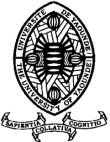Clinical Audiometric Profile of Nightclub Employees in the City of Parakou in 2021
DOI:
https://doi.org/10.5281/hra.v1i2%20Apr-May-Jun.4750Keywords:
Surdité professionnelle, Bruit, Boîtes de nuit, Parakou, BéninAbstract
ABSTRACT
Introduction. Employees of nightclubs are exposed to high intensity noise and may experience work-related hearing impairment. The present study aims to describe the audiometric clinical profile of nightclub employees in the city of Parakou in 2021. Material and methods. This was a descriptive cross-sectional study with an analytical aim carried out on 114 employees of the city of Parakou in 2021. Results. A total of 114 employees were collected. The mean age was 26.38 years ± 4.81 and the sex ratio was 0.87. The noise level was between 90 and 100 dB for 51.75% of the employees. Tinnitus was the most expressed complaint, respectively 21 (18.40%) on the right and 22 (19.30%) on the left. They were followed by bilateral hearing loss 6 (5.30%). The prevalence of deafness was 37.72%. The risk of occupational deafness was 2.80 times higher (RP=2.80; CI= [1.02-7.67]) in subjects exposed to a sound level between 90 and 100 dB than in those exposed to a sound level below 80 dB. Sound level between 90 and 100 dB (p=0.017), exposure time per day > 08h (p=0.018), exposure time per week > 40h (p=0.002) and seniority in the nightclub of 32 to 38 months (p=0.024) were significantly associated with occupational deafness. Conclusion. Employees of nightclubs in the city of Parakou have significant hearing problems related to noise exposure and detectable by audiometry. It is important to put in place preventive measures against noise pollution in these nightclubs by including periodic medical examinations.
RÉSUMÉ
Introduction. Les employés des boîtes de nuit sont exposés à des bruits de forte intensité et peuvent subir des troubles de l’audition dus au travail. La présente étude a pour but d’étudier le profil clinique audiométrique des employés des boîtes de nuit de la ville de Parakou en 2021. Matériels et méthodes. Il s’est agi d’une étude transversale descriptive à visée analytique réalisée sur 114 employés de la ville de Parakou en 2021. Résultats. Au total 114 employés ont été colligés. L’âge moyen était de 26,38 ans ± 4,81 et le sex ratio est 0,87. Le niveau sonore était compris entre 90 et 100 dB pour 51,75 % des employés. Les acouphènes étaient les plaintes les plus exprimées, respectivement 21 (18,40 %) à droite et 22 (19,30 %) à gauche. Elles étaient suivies par l’hypoacousie bilatérale 6 (5,30 %). La prévalence de la surdité était de 37,72 %. Le risque de surdité professionnelle était 2,80 fois plus élevé (RP=2,80; IC= [1,02-7,67]) chez les sujets exposés à un niveau sonore compris en 90 et 100 dB que chez ceux exposés à un niveau sonore inférieur à 80 dB. Le niveau sonore compris entre 90 et 100 dB (p=0,017), la durée d’exposition par jour > 08h (p=0,018), la durée d’exposition par semaine > 40h (p=0,002) et l’ancienneté dans la boîte de nuit de 32 à 38 mois (p=0,024) étaient significativement associés à la surdité professionnelle. Conclusion. Les employés des boîtes de nuit de la ville de Parakou ont de façon significative des troubles auditifs liés à l’exposition au bruit et décelables à l’audiométrie. Il importe de mettre en place des mesures préventives contre les nuisances sonores dans ces boîtes de nuit en y incluant des visites médicales périodiques.
Downloads
Published
How to Cite
Issue
Section
License
Authors who publish with this journal agree to the following terms:
- Authors retain copyright and grant the journal right of first publication with the work simultaneously licensed under a Creative Commons Attribution License CC BY-NC-ND 4.0 that allows others to share the work with an acknowledgement of the work's authorship and initial publication in this journal.
- Authors are able to enter into separate, additional contractual arrangements for the non-exclusive distribution of the journal's published version of the work (e.g., post it to an institutional repository or publish it in a book), with an acknowledgement of its initial publication in this journal.
- Authors are permitted and encouraged to post their work online (e.g., in institutional repositories or on their website) prior to and during the submission process, as it can lead to productive exchanges, as well as earlier and greater citation of published work










